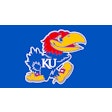Copyright 2018 Worcester Telegram & Gazette, Inc.
All Rights Reserved
Telegram & Gazette (Massachusetts)
WORCESTER — While the city lays the initial groundwork for the construction of a new home for the coming of Worcester Red Sox in 2021, it is now getting ready to also move forward on a plan to finance the ballpark project.
City Manager Edward M. Augustus Jr. is recommending the creation of 28.6-acre district adjacent to the proposed ballpark in the Kelley Square area, where the incremental increase in tax revenues generated by private development there will be used to finance the construction of the 10,000-seat minor league stadium, to be known as Polar Park.
The proposed district — the Canal District Ballpark DIF Development District and Invested Revenue District — encompasses 16 taxable real estate properties in the Canal District. It includes the ballpark parcel and development sites around the ballpark.
Of the 16 properties, seven are commercial (3.34 acres) and nine are industrial (21.41 acres).
The proposed district will not lead to the elimination of any residential units or displace any residents, according to city officials.
The area is roughly bounded by railroad tracks on the north side of Madison Street; it then crosses Madison Street and incorporates the vacant Wyman-Gordon property on the south side of the street to as far south as Hermon and Lamartine streets. The proposed boundary then goes east along Lamartine Street to Washington Street, north across Madison Street and the east to Green Street.
It then goes north on Green Street to Ash Street and then west to Ash and Summit streets. From there the boundary goes northerly, incorporating parts of
Gold and Plymouth streets, to the Pickett Municipal Parking Lot on Green Street.
Within that area, the city wants to utilize what is known as "District Improvement Financing," a state law that allows municipalities to utilize new tax revenues generated within a targeted area for the purpose of economic development.
A so-called DIF is generally enacted along with an Invested Revenue District from which the city can collect and designate future incremental real and personal property tax revenues to support infrastructure investment and economic development within the proposed district.
It is the same concept the city used for CitySquare.
"Through this designation the city has been able to leverage private investment to offset the cost of infrastructure and roadway improvements in the area of CitySquare," Mr. Augustus wrote in a report that goes before the City Council Tuesday night.
Mr. Augustus said approval of the Canal District Ballpark DIF Development District and Invested Revenue District is needed before the city can sell bonds for the ballpark project.
Because time is of the essence, the manager will be asking the council Tuesday night to refer his recommendation to its Economic Development Committee for a hearing.
He said District 2 Councilor Candy Mero-Carlson, who chairs the three-member Economic Development Committee, has indicated that it will hold a hearing before the regular City Council meeting on Oct. 23, with the intention of reporting its recommendation to the full council later that same evening.
Michael E. Traynor, the city's chief development officer, emphasized that the establishment of a DIF District does not impose a special assessment or other increased tax on any parcel within it.
He said the same property tax rates that are applied to parcels outside of the DIF District are applied within it.
"This designation is simply a tool in the economic tool box that allows cities and towns throughout the commonwealth to leverage increased tax revenues as a result of private investment for further improvements in a special area," Mr. Traynor said.
The construction cost of the proposed ballpark alone has been pegged at $86 million to $90 million. Meanwhile, the cost of the overall ballpark project, which includes land acquisition and other associated improvements in that area has been estimated at $100.8 million — the amount of money the city intends to borrow for the project.
Since it was first announced that the Pawtucket Red Sox will be moving to Worcester for the start of the 2021 season, Mr. Augustus has repeatedly said that ballpark project will be "self-supporting" and not cost Worcester taxpayers any additional money. He has also said that existing budget money will not be used to fund the project.
Instead, the project has been structured in such a way that new taxes and other revenues sources it generates will be used to pay for the ballpark.
The term of the DIF District is 30 years from the date of adoption by the City Council, according to Mr. Traynor. He said the DIF program will run concurrently with the DIF District.
Mr. Traynor said the DIF statute enables the city to allocate a defined percentage of revenue accruing from the improvement of the properties within the DIF District to fund eligible activites — in this case the construction of a state-of-the-art minor league baseball park.
He said the tax increment that is subject to "capture" through the DIF Development/Invested Revenue District is defined as the valuation amount by which the assessed value of the district exceeds the original assessed value of the district.
City Assessor William Ford has certified that the 16 properties within the proposed DIF district, including land and buildings, have an aggregated assessed value of slightly more than $10 million as of Jan. 1, 2018.
That means that additional property taxes generated by new development in that area — over and above the property taxes now generated by the current $10 million valuation — will be used to off the construction bonds for the ballpark. The city will still retain for the operation of the municipal government the taxes now being generated by those properties.
The new tax revenue to fund the ballpark project will come from a $90 million private development, as part of an overall $240 million redevelopment of the Kelley Square area.
That private development, much of which is proposed to be done on the vacant Wyman-Gordon property, includes the construction of a 150-room hotel, a second 100- to 110-room boutique hotel with rooms overlooking the ballpark, a 225-unit apartment complex and 65,000 square feet of retail/restaurant space.
All of that is to be done in the first phase of the project by March 2021, according to city officials.
The second phase of the project would include 200,000 square feet of residential, office and/or mixed-used development. City officials did not calculate any tax revenues generated for that phase of the project in the pro forma that was developed for financing the construction of the ballpark.
Any tax revenue generated from that phase would be in additional to what has already been calculated.
Read More of Today's AB Headlines
Subscribe to Our Daily E-Newsletter
Terms and Conditions Privacy Policy



































